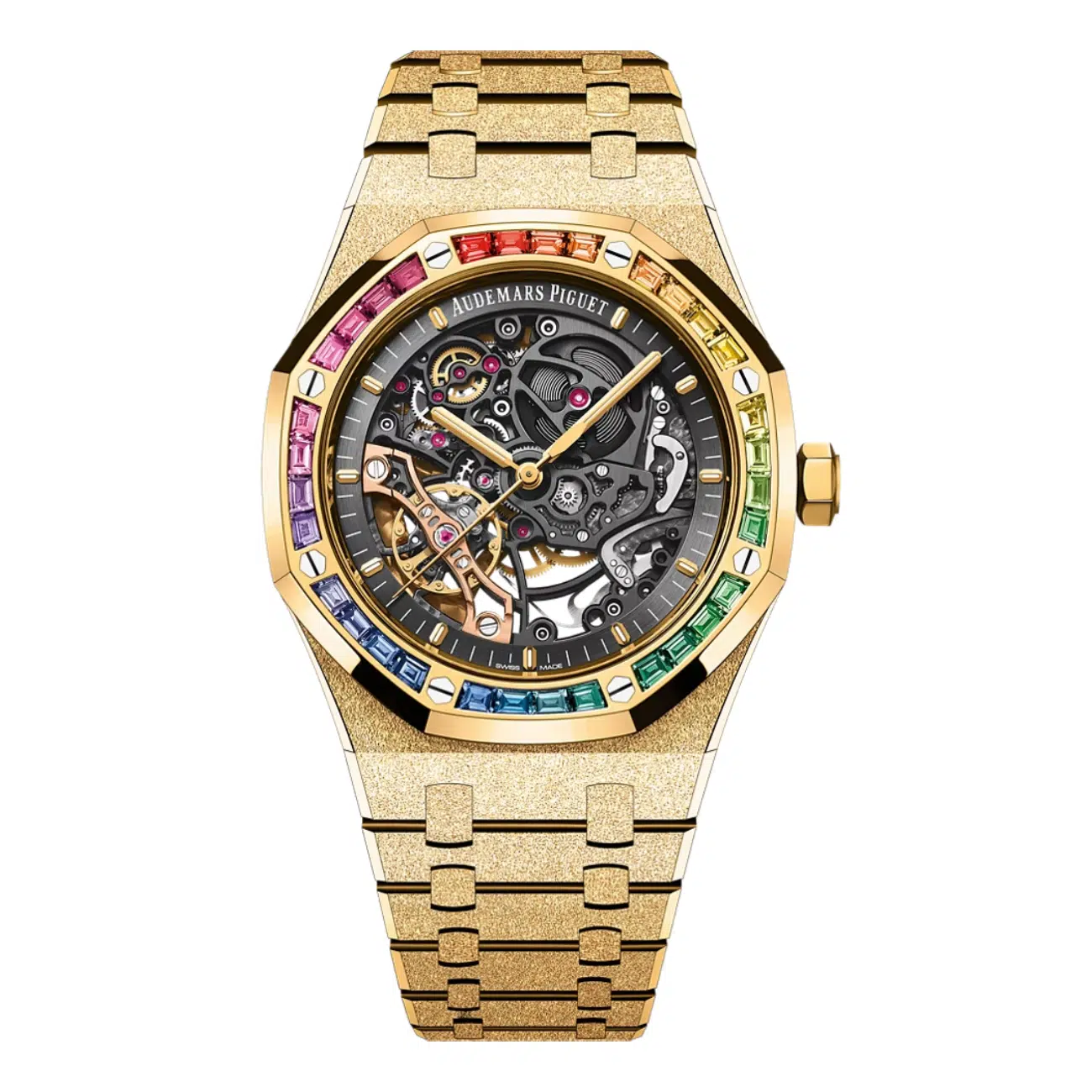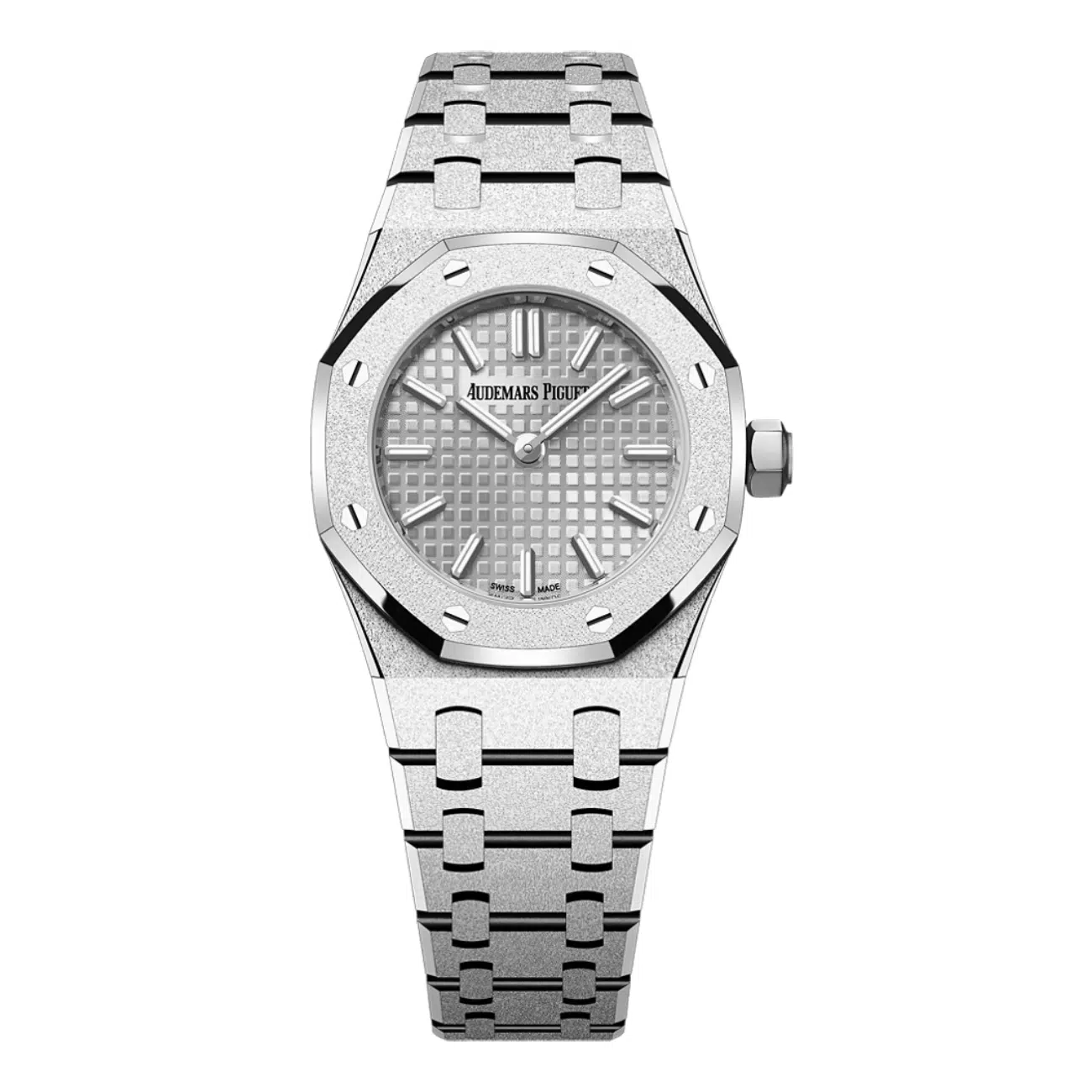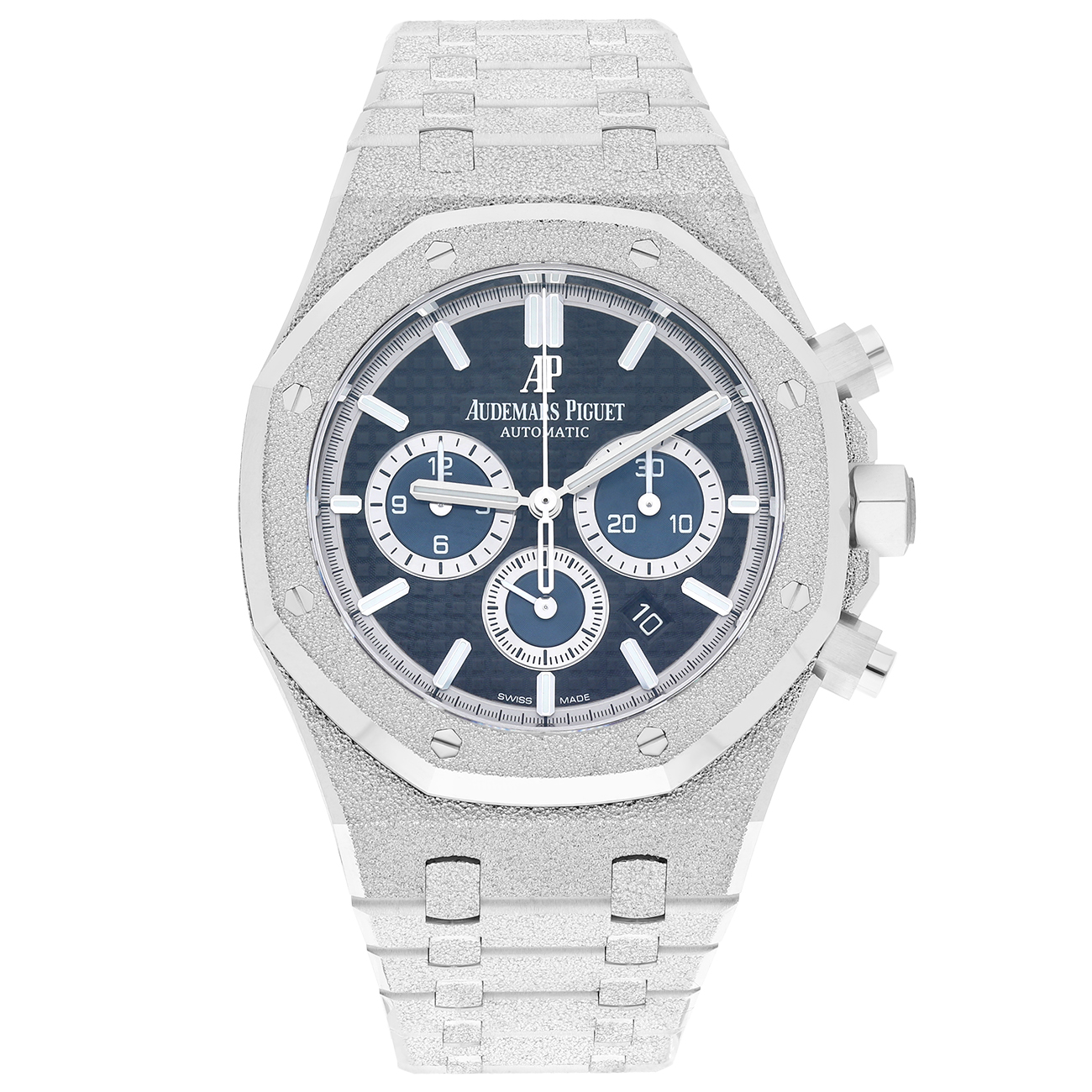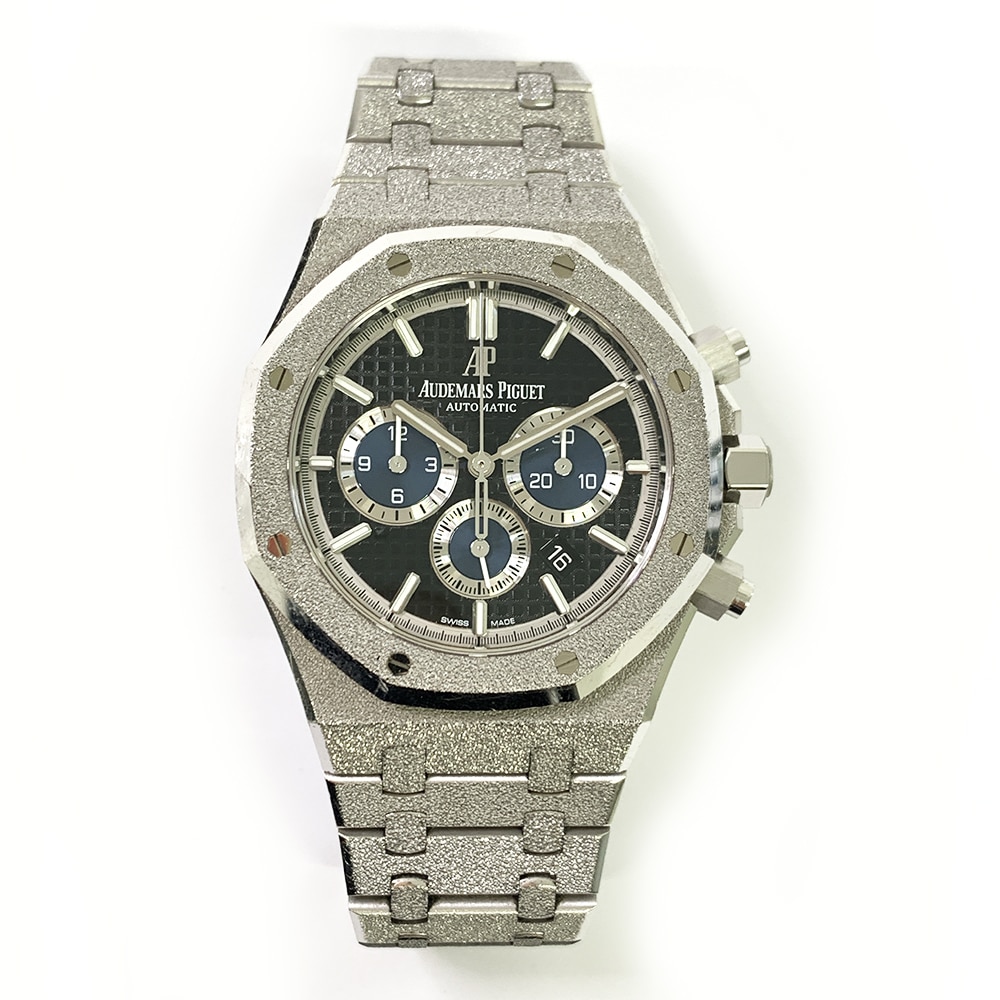Frosted Audemars Piguet Royal Oak
The frosted AP Royal Oak captivates people with its mesmerizing surface that resembles crystallized ice. Not many know that craftsmen create this effect using diamond-tipped hammers. Show more
This isn’t just another luxury watch with a fancy name. The stunning result came from meticulous craftsmanship that took over a year to perfect. AP’s work with Florentine jeweler Carolina Bucci in 2016 brought new life to the iconic Royal Oak by applying a centuries-old jewelry technique.
The Royal Oak Frosted Gold collection stands as one of AP’s most distinctive interpretations of their classic design. Each microscopic indentation on the surface creates a unique way of scattering light that makes the watch shimmer with subtle brilliance.
What Makes the Frosted AP Royal Oak So Unique?
The frosted AP Royal Oak captivates with its unique surface treatment that elevates the iconic silhouette to new heights. This watch creates an almost magical effect that shifts and changes with every movement in light, setting it apart from standard polished or brushed finishes.
The Origin of the Frosted Finish
AP launched the frosted finish in 2016 to celebrate 40 years of the ladies’ Royal Oak collection, which Jacqueline Dimier designed in 1976. This approach went beyond pure esthetics. AP wanted to honor its heritage while pushing boundaries of innovation. The technique adapts an ancient gold hammering method into a modern horological craft that works for watches of all sizes.
Collaboration with Carolina Bucci
Carolina Bucci, a fourth-generation Florentine jewelry designer, played a key role in this innovation. Her family’s workshop opened in Florence back in 1885. Before this partnership, Bucci had worn a vintage yellow gold Royal Oak for over five years. The connection between Bucci and AP ran deep because both companies shared similar values as family businesses. Antonio Seward, North American CEO of AP, put it best: “We are both companies in the hands of the founding families, so there’s a commonality and connection in the roots of preserving the heritage of a brand”.
Florentine Hammering Technique Explained
The look of the frosted gold AP comes from a precise process known as the Florentine technique. Skilled craftspeople use a diamond-tipped tool that vibrates at 12,000 beats per minute to hammer the gold surface. This creates thousands of tiny indentations. These microscopic facets catch light from multiple angles, which creates a shimmer like diamond dust without using actual gems.
The team faced several challenges when adapting this jewelry technique to the Royal Oak. They needed to keep Gérald Genta’s clean, angular lines intact while adding this textured finish. The Royal Oak’s signature bracelet needed to stay flexible and soft, which required extensive testing. Bucci’s Florentine craftsmen worked with AP’s manufacture for months. They ended up developing a process that could enhance both the case and bracelet without losing the watch’s essential character.
Audemars Piguet Frosted Price& Market Snapshot
| Model | Retail | Market Avg. | Trend |
|---|---|---|---|
| 34 mm WG ladies | $54 000 | $60 000 | +9 % YoY |
| 37 mm Double‑Balance YG | $133 000 | $148 000 | +11 % YoY |
| 41 mm Chrono RG | $78 000 | $89 000 | +7 % YoY |
Royal Oak Frosted FAQs
What is a Frosted AP?
A “Frosted AP” is an Audemars Piguet—usually a Royal Oak—whose 18 kt gold (or platinum) case and bracelet have been hand‑hammered with a diamond‑tipped burin, a Florentine‑jewellery technique introduced by designer Carolina Bucci in 2016.Audemars Piguet Frosted Average Price Chart
Frosted • Last 12 months • Average




















